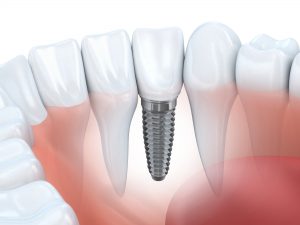
Have you ever faced the traumatizing experience of breaking a front tooth? Maybe you bit down on an ice cube or took a fall during a sports game. Whatever the cause, a broken front tooth can be both painful and embarrassing. But fear not, because there’s hope for restoring your smile! In this blog post, we’ll explore the common causes of broken front teeth, immediate actions to take, various treatment options, preventive measures, and how to care for your fixed tooth. So, let’s dive in and learn how to bring back your beautiful and healthy smile!
Key Takeaways
- Common causes of a broken front tooth include accidents, weak enamel and tooth decay, chewing on hard objects, and consuming hard foods.
- Immediate actions for a broken front tooth are to remain calm and contact the dentist. Options such as dental bonding or veneers may be available.
- Preventive measures like wearing mouthguards can reduce risk of breaking teeth while good oral hygiene is key to preserving fixed teeth.
Common Causes of a Broken Front Tooth
A broken front tooth can happen to anyone, at any time. Accidents such as falls, sports injuries, and car accidents are common culprits, often leading to tooth breaks. But did you know that weak enamel and tooth decay can also be major contributors? When tooth enamel weakens, it becomes more susceptible to damage, making it easier for your front tooth to break under the force of chewing or biting.
Moreover, chewing on hard objects, such as ice cubes or hard candy, can put undue stress on your teeth, resulting in chipped or broken teeth. Consuming hard foods and drinks, like hard breads, hard cheeses, and carbonated beverages, may also pose a risk for tooth damage, including chipped teeth.
Don’t delay seeing a dentist if you happen to have a chipped or broken tooth, as this could prevent further damage and complications from a broken or chipped tooth.
Immediate Actions for a Broken Front Tooth
When faced with a broken front tooth, the first thing you should do is stay calm. While it’s natural to panic, remember that there are solutions available to fix your tooth, even if it’s a cracked tooth or a knocked out tooth. Next, contact your dentist immediately to schedule an appointment for your dental emergency.
Meanwhile, ensure the tooth is protected to avoid additional damage or irritation. Here’s what you can do:
- Rinse your mouth with warm water.
- Gently floss to remove any food particles that may be stuck around the broken tooth.
- Use dental wax or temporary bonding material to protect the jagged edges of the tooth. These can be found at most drugstores. This will help prevent irritation to your tongue and gums while you wait for your dentist appointment.
Additionally, you can take over-the-counter painkillers and apply ice to the outside of your face to help manage pain and swelling.
Treatment Options for a Broken Front Tooth
Depending on the severity of the damage, there are several treatment options available to restore your broken front tooth. These include:
- Dental bonding
- Veneers
- Dental crowns
- Root canal therapy
A detailed exploration of these treatments will help you understand the best option for your specific situation.
Dental Bonding
Dental bonding is a popular choice for repairing minor chips and cracks in your teeth. This procedure involves:
- Roughening the tooth’s surface
- Applying a conditioning liquid to help the composite material adhere securely
- Applying a tooth-colored composite material to the surface of your tooth
- Molding and polishing the composite material to blend in with the surrounding teeth
- Using a blue light to harden the material, completing the bonding process
Affordability and speed are significant benefits of dental bonding. The entire process can often be completed in a single visit, and the results can last up to 10 years with proper care. On the downside, dental bonding might not be the best solution for severe tooth damage or extensive decay.
Veneers
Veneers are another option for restoring the appearance of a damaged front tooth. These thin shells of porcelain or composite material are custom-made to fit over the front surface of your tooth, providing a natural-looking cover. Veneers can be an excellent choice for those with more extensive damage or cosmetic concerns, as they can dramatically improve the appearance of your teeth.
The process of getting veneers typically involves two visits to your dentist. During the first visit, a small portion of your tooth’s surface is removed to prepare it for the veneer, and an impression is taken to create a custom veneer in a dental laboratory. Temporary veneers may be placed while you wait for your permanent ones to be fabricated. Once the permanent veneers are ready, your dentist will affix them to the surface of your tooth during a second visit.
Veneers, when properly cared for, can serve you for up to 30 years.
Dental Crowns
For more severe tooth damage, dental crowns may be the best option. A dental crown is a cap that covers and protects the damaged tooth, providing a natural look and feel. Dental crowns are often used when:
- a significant amount of the original tooth has been damaged or lost
- the tooth is weakened and at risk of further damage
- the tooth has undergone root canal treatment
- the tooth is misshapen or discolored and needs cosmetic improvement
The process of getting a dental crown, which is different from a dental implant, usually requires two visits to your dentist’s office. During the first visit, your dentist will prepare your tooth, take an impression, and place a temporary crown to protect your tooth until the permanent crown is ready.
During your second visit, the dentist will replace the temporary crown with a permanent one, guaranteeing a perfect fit and correct alignment of your bite. Dental crowns are typically made of tooth-colored porcelain and can last for 5-15 years or more, depending on your oral hygiene and care.
Root Canal Therapy
In cases where the tooth’s pulp and nerve have been damaged, root canal therapy may be necessary. This procedure involves drilling into the tooth, removing the damaged pulp and nerve, and sealing the tooth to prevent further infection. A dental crown may also be placed on top of the tooth if its strength has been compromised by the root canal therapy.
Despite its reputation for causing pain, properly conducted root canal therapy should cause minimal discomfort, if any. The procedure is typically completed in one or two visits and is an effective way to save a severely damaged tooth from tooth extraction.
Preventive Measures to Avoid Broken Teeth
Taking preventive measures can significantly reduce your risk of a broken front tooth. One of the most effective ways to protect your teeth is by wearing mouthguards during contact sports or other activities that may pose a risk for dental injuries.
Besides wearing mouthguards, you should also steer clear of hard foods that might damage your teeth. Examples of hard foods to avoid include hard candy, ice, and nuts.
Good oral hygiene is a vital part in preventing tooth damage. Brush your teeth twice a day, floss daily, and visit your dentist regularly for check-ups and cleanings.
What to Expect During Your Dentist Visit
A visit to the dentist for a broken front tooth will involve an in-depth examination to gauge the damage and determine the suitable treatment. Your dentist will discuss the various treatment options available, such as:
- Dental bonding
- Veneers
- Dental crowns
- Root canal therapy
They will help you choose the best solution for your specific situation.
In some cases, your dentist may be able to begin the chosen treatment during your first visit, especially for minor damage that can be addressed with dental bonding. For more complex treatments such as veneers or dental crowns, you may need to schedule additional visits to complete the process.
Potential Complications of Ignoring a Broken Front Tooth
Neglecting a broken front tooth can escalate the damage and lead to severe complications. The longer you wait to seek treatment, the more likely it is that an infection could develop and spread, resulting in an abscess, bone loss, and other severe issues. In some cases, neglecting a fractured front tooth can even lead to tooth loss.
Seeking immediate treatment can help avoid these complications and secure a positive outcome for your dental health. So, if you’re experiencing a broken front tooth, don’t wait – contact your dentist as soon as possible to discuss your treatment options and begin the process of restoring your smile.
How to Care for Your Fixed Front Tooth
Once your front tooth is fixed, you need to care for it appropriately to prolong the lifespan of the repair. Maintain good oral hygiene by brushing your teeth twice a day, flossing daily, and using a mouthwash to keep your mouth clean and healthy. Regular dental check-ups every six months will also help guarantee the durability of your tooth repair.
Besides good oral hygiene, being cautious about what you eat is also important. Avoid hard foods that could cause further damage to your repaired tooth, such as nuts, hard candy, and ice cubes. By taking these precautions and following your dentist’s advice, you can enjoy the benefits of your fixed front tooth for years to come.
Summary
In conclusion, fixing a broken front tooth is a process that involves understanding the causes, taking immediate actions, considering various treatment options, and practicing preventive measures. Whether you choose dental bonding, veneers, dental crowns, or root canal therapy, it’s crucial to consult with your dentist to determine the most suitable treatment for your specific situation.
Remember, a broken front tooth doesn’t have to be a permanent setback. With the right treatment and care, you can restore your beautiful, healthy smile and regain your confidence. So, don’t hesitate – take action today and let your smile shine bright!
Frequently Asked Questions
Can a broken front tooth be fixed?
A broken front tooth can be fixed depending on the size of the fracture. A small piece can be repaired with a bonded filling, and a larger fracture may require a root canal, crown or veneer for stability.
Is a broken front tooth an emergency?
A broken front tooth is not necessarily an emergency, however it is important to seek immediate attention from a dentist to assess the extent of the damage and check for any associated pain or bleeding.
What happens when half your front tooth breaks off?
If half of your front tooth breaks off, the most common advice is to visit a dentist. Depending on the size of the fracture, it can either be bonded back together or covered with a dental crown, root canal treatment, or veneer for stability. These treatments can help restore the tooth’s strength and appearance. In some cases, the dentist may recommend extracting the tooth and replacing it with an implant or bridge.
What are the common causes of a broken front tooth?
Common causes of a broken front tooth include accidents, weak enamel, chewing on hard objects, and consuming hard foods and drinks.
What are the treatment options for a broken front tooth?
Depending on the severity of the damage, treatment options for a broken front tooth include dental bonding, veneers, dental crowns, and root canal therapy.
Please select service, date and provider then click on the Find Appointments button.










